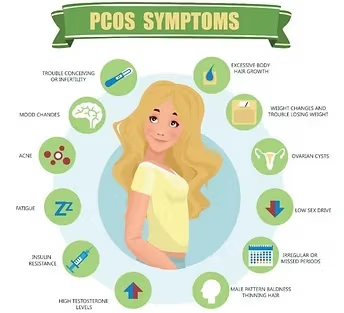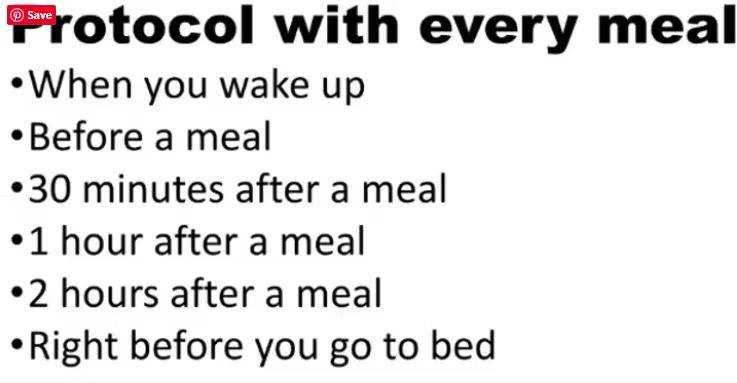Understanding the Challenges: PCOS and Endometriosis
PCOS Symptoms:
- Excessive hair loss
- Ovarian cysts
- Irregular and missed periods
- High testosterone levels
- Insulin resistance
- Fatigue
- Acne
Endometriosis Symptoms:
- Pelvic pain
- Infertility
- Excessive bleeding
- Constipation
- Nausea
Blood Sugar and Inflammation:
There is a direct relationship between blood sugar and inflammation, and therefore a relationship between blood sugar and PCOS, endometriosis, and painful periods.
Implementing the Protocol: Tracking Blood Sugar Levels
Tracking Blood Sugar Levels:
Luckily, it is very easy to track your blood sugar levels. You can purchase this $30 glucose meter [2]. You will use this to prick your finger, and measure the amount of glucose in your blood using the slides you can also purchase at a very affordable price.
How to Track Your Blood Sugar Levels:
When you get up in the morning, you are going to record your blood sugar. You’ll also record your levels before you eat, thirty minutes after eating, one hour after eating, two hours after eating, and again before you go to bed. If you happen to wake up in the middle of the night, it is also a good idea to test it then.
That can add up to a lot of pricks very quickly. For this first week, you might end up pricking your finger 15 times a day. But what’s the point? What is this going to accomplish?
Leveraging Data for Personalized Improvement
The Importance of Data:
After all of these tests over the course of a week, we will now have a fairly clear picture of how your blood sugar fluctuates over the course of the day. Now you will be able to clearly identify if you have a few or many spikes in a day, or if you are in the sweet spot.
If you fall out of that zone, then we can make a good assumption that it is contributing to your female problems, since your chronic state of inflammation all over your body will also cause female organs to inflame
Taking the Next Steps
Seeking Personalized Guidance:
There is a fair probability that your levels are high, and there are many more articles about this on my website. But what can you do?
The good news is that there is a lot of hope. If you are looking to get some help, you can schedule a Zoom or phone call with me, and we can discuss a path to get you better.
Ideally, have a hyperlink to the bottom of the page, or a link to wherever you have these available. I’ve purposely left this sort of vague so you can change it to however you are going to link to the studies.
Embrace the New Protocol and Reclaim Your Well-being
Take charge of your PCOS, endometriosis, and painful periods with this revolutionary protocol. By tracking your blood sugar levels and making targeted adjustments, you can alleviate your symptoms and achieve a better quality of life. Say goodbye to pain and hello to a brighter, healthier future.
Video Time Stamps
[00:00:05] PCOS
[00:00:35] the new protocol for PCOS and endometriosis
[00:00:55] excessive hair loss, ovarian cysts, irregular periods or missed periods
[00:01:05] acne
[00:01:20] excessive bleeding, constipation, nausea
[00:01:25] endometriosis
[00:02:00] management of PCOS, a clinical review
[00:02:15] blood sugar
[00:03:05] sugar between 80 and 100
[00:03:30] pro inflammation
[00:04:10] hypoglycemic
[00:04:52] glucose meter
[00:05:25] sugar levels
[00:06:45] inflamed
Frequently Asked Questions (FAQ)
There is a direct link between blood sugar spikes and inflammation throughout the body. Since PCOS and Endometriosis are inflammatory conditions, stabilizing your blood sugar can help reduce this systemic inflammation, which in turn can alleviate symptoms like pelvic pain, fatigue, and hormonal imbalances.
The protocol involves using an affordable glucose meter to test your levels at key times: upon waking, before meals, 30 minutes after eating, 1 hour after eating, 2 hours after eating, before bed, and if you wake up at night. This intensive tracking for a week creates a clear picture of how your body responds to food and daily rhythms.
Yes, for the initial one-week assessment phase, frequent testing (which can add up to 15 times a day) is recommended. This comprehensive data is crucial for identifying hidden blood sugar spikes that contribute to chronic inflammation. Once you have a baseline, the frequency can be reduced.
The data you collect is the first step. If your levels are outside the ideal range, it confirms that blood sugar dysregulation is likely contributing to your symptoms. The next step is to use this information to make targeted dietary and lifestyle adjustments. For personalized guidance, you can schedule a consultation to discuss a specific plan.
You can purchase an affordable glucose meter (approximately $30) online or at most pharmacies. The blog post recommends a specific meter (linked in the article) along with the corresponding test strips.










